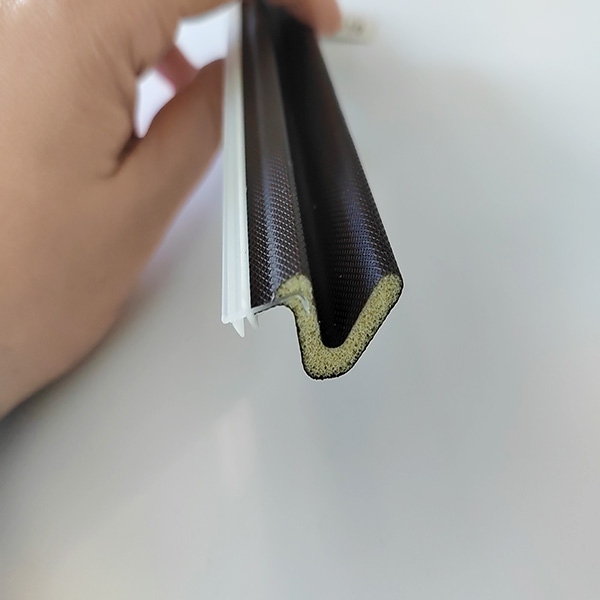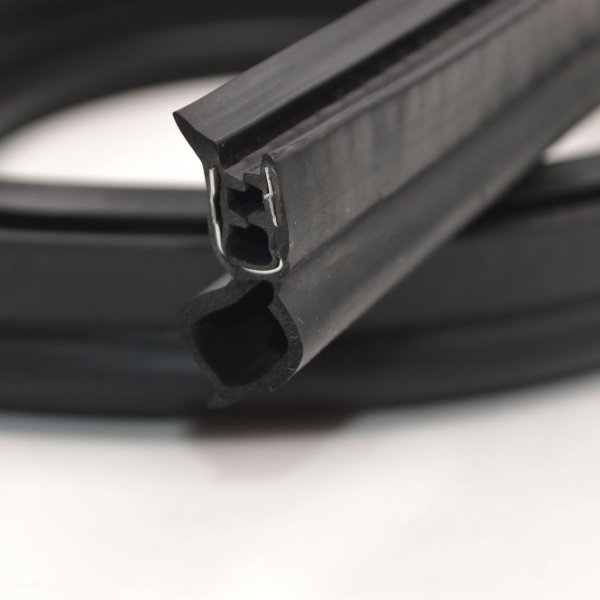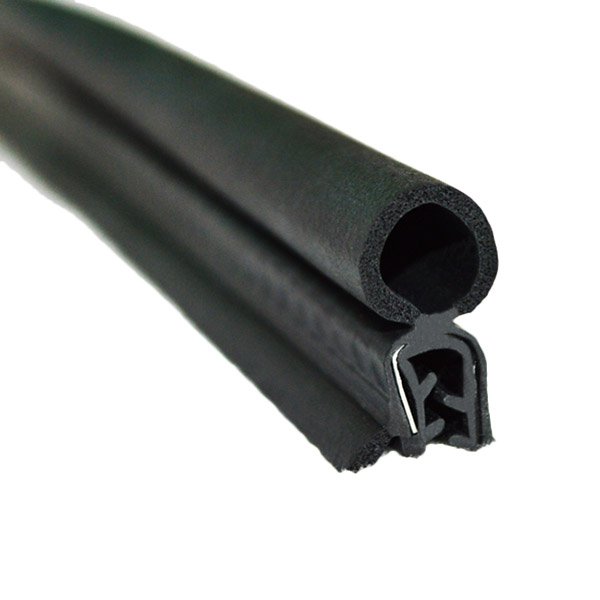Do you feel sticky hands that kill your attention when you work on a table or type something on the keyboard? It is because of the increased humidity in the house and excessive moisture in the air that makes you uncomfortable. We often use air conditioners to control air humidity and temperature and install air protection equipment on our windows, but sometimes we forget about the doors. In this case, a door seal strip is an excellent choice to protect the air from leaking through your doors.
The window and door seal strip sometimes leaks air due to damaged door seals or improper seal installation. However, a damaged door seal strip or improper installation brings about air circulation and increases unnecessary energy usage of air conditioners. So here is a must-read DIY installation guide to solve these problems.
We make the article How to install door seal easy to read and understandable. In this article, we outline the necessary installation steps and share some valuable tips to help you install the door seal strip correctly. At the end of the article, we will walk you through the importance of establishing the door seal strip at home and recommend some of the most common ones to fit your needs.
How To Install Door Seal Strip
Installing the door seal strip is simple if you follow the steps below. Before getting started, you should figure out what you are doing and why you should do this. If you learn about the basics of the rubber sealing installation, it will make you an expert in the field in a breeze.
On the other hand, choosing the best door seal strip is also essential to ensure a better, long-lasting effect. Besides, choosing best quality door seal strip is essential to ensure a durable and long-lasting performance. A good quality door seal strip is featured with high resilience, compression resistance and excellent tightness, which provides a longer service life for at least 10 years after installation.
Replacing an old door seal strip doesn’t require any special tools. As we mentioned above, the installation is quite simple and quick. Here are the tools commonly used: screwdriver, tape measure, foam tape, weatherstripping or door seal strip, scissors or knife, and door sweep. If you don’t have these tools ready at your hand, go to the nearby market and get them prepared.
Step 1: Preparation
Firstly, you should remove the adhesives and screws that hold the door seal strip from the door jamb. Secondly, cut the door seal strip to the height of the door jamb and determine an installation location to replace the old door seal strip. Thirdly, clean the door jamb and leave it to dry completely with soapy water, and if necessary, use fine-grit sandpaper to remove adhesive residuals.
Step 2: Remove the existing door seal strip and adhesives
If you have installed a door seal strip, remove it first and re-install the new one with a flathead screwdriver to ensure enough space. Then, pull the defective rubber door seal out gently from the door jamb and remove all the rubber particles before installation.
After removing the old door seal strip:
- Clean the adhesive materials from the surface of the door jamb by applying high-quality adhesive removers to keep the surface clean and dry.
- Use a rag to rub the surface. You should repeatedly scratch the door surface until the adhesives are entirely removed.
- Use a paper towel to clean all the adhesive dirt.
Step 3: Tighten the door hinges
After preparing and cleaning, check the door hinges carefully. Before cutting the door seal strip, ensure the door hinges are tight. And you can use a doorknob to lift the door upward. If it goes upward, you should tighten the upper screws of the hinges. If the screws are still loose, you might need to use glued wood plugs and re-drive the screws.
Why should you tighten the door hinges? The answer is that it ensures the door is properly tightened. In addition, it also helps the newly installed door seal strip to prevent the gap evenly and perform its job correctly.
Step 4: Measure the door jamb
You should carefully measure the gap between the door and the jamb and the width of the door jamb. These two measurements allow you to determine the thickness and width of the door seal strip.
Measure the total length of the door seal strip on both sides of the door. Before installation, you should buy enough door sealing strips around the jamb. Moreover, consider purchasing a little extra in case you need it.
Step 5: Choose the appropriate door seal strip

Foam and rubber materials are the most popular on the market. Foam and rubber materials are the most popular on the market. But they also have advantages and disadvantages. The rubber insulates better than the foam door rubber seal. The foam door seals are easier to install than rubber door seals. In addition, rubber door seals are comparatively more expensive than foam door seals.
Step 6: Cut the door rubber seal and check it before adding the adhesives
According to the measurement from the fourth step, cut the portion of the weather stripping door strip. After cutting, check the size by putting the cut piece on the door jamb before adding the adhesives. If the cut portion of the seal is a bit long, don’t cut. You can adjust it after installation. But don’t cut a shorter piece, as it will not fit properly and is also unprofessional.
Typically, you should cut three pieces of door seal strips: two for both sides of the door and one for the top side.
Step 7: Add an ideal adhesive for the chosen door seal strip
Some of the door seal strip installations don’t require adding adhesives. On the other hand, some require adding sealing adhesives. If you add seal adhesives, you should consider the best quality for your door, or you might find the door sealing strip detached from the frame after a few years. Therefore, a high-quality adhesive is necessary. However, some door sealing strips have attached adhesives, making the installation more manageable.
Step 8: Complete the installation

If the door seal strip features an adhesive back, all you need to do is peel it off and press it on the place around the corner of the door jamb. At this stage, ensure the door seal strips are correctly attached to the surface of the door jamp.
It is crucial to ensure no gaps between the strip and frame. Press the seal one last time to ensure the seal strip is firmly connected to the metal frame.
Step 9: Install a door sweep
Well, you have completed sealing the door’s top and two sides. Yet, the bottom side is open to the outside environment. In this case, we suggest installing a door sweep to seal the gap between the door and the floor. Some door sweep types are available in the market: door draft stoppers, self-adhesive door draft stoppers, double-layer self-adhesive sweep, brush door sweep, etc.
Installing a door sweep is much easier than door seal strip installation. All you need to do is cut a specific portion of the door sweep and attach it to the bottom side of the door.
Why is Installing A Door Seal Strip Essential?
The door seal strip is vital in controlling the air inside a house. How? It prevents air from leaking outside to inside or inside to out. As a result, the inside atmosphere can’t change unnecessarily. Now, when the inside atmosphere remains constant, the air conditioning machine can operate as per the operator’s requirements. When an air conditioner works smoothly, it saves a lot of energy, which is beneficial.
On the other hand, the constant behavior of the indoor atmosphere keeps the moisture content consistent. As a result, you will feel comfortable inside your house. One of the significant advantages of installing door sealing strips is noise protection. These door seal strips prevent the air from entering indoors and reduce noise. As a result, it creates a peaceful environment. You can concentrate on your work or study.

Final Thought
There are several of the most common door seals on the market. You can choose any of these types depending on your house door design. For example, weather stripping door strips, plastic strips, foam door seals, weather strips for windows E P D I profile, vinyl clad weatherstrip, etc.
Door seal strips are necessary for every building, from the office to the house. It helps save energy and creates a comfortable atmosphere inside a house. On the other hand, it also helps reduce noise, which enables you to sleep better or concentrate on work or study. Therefore, follow our DIY installation guide if you want this done.
